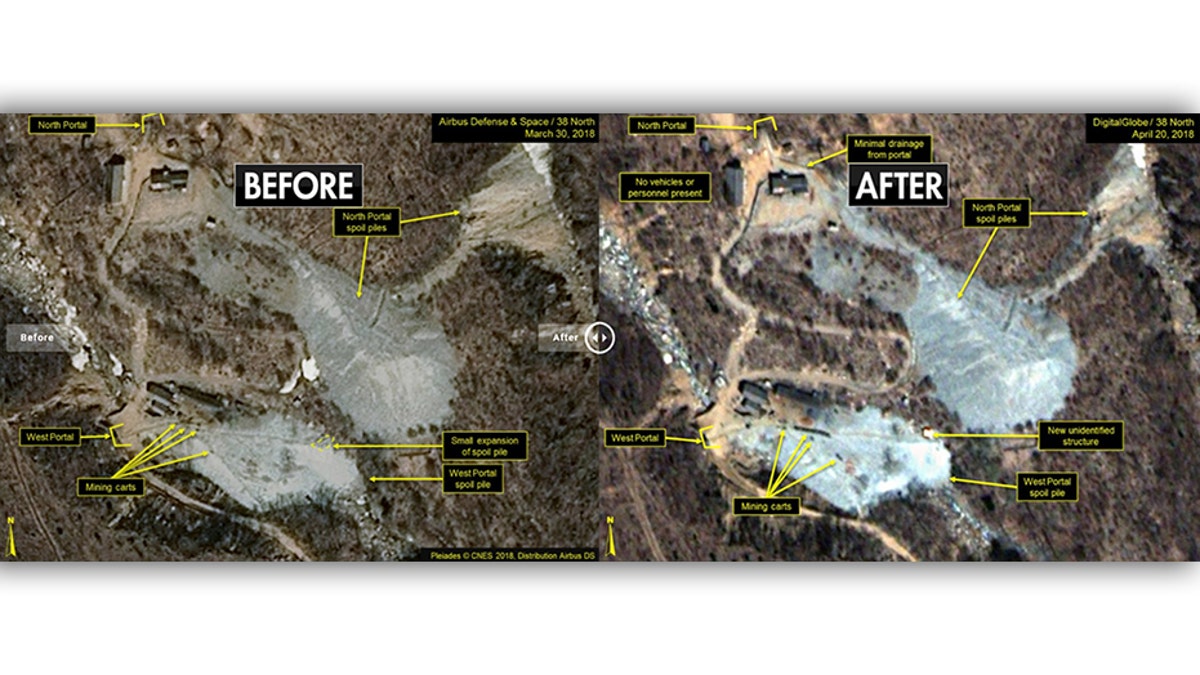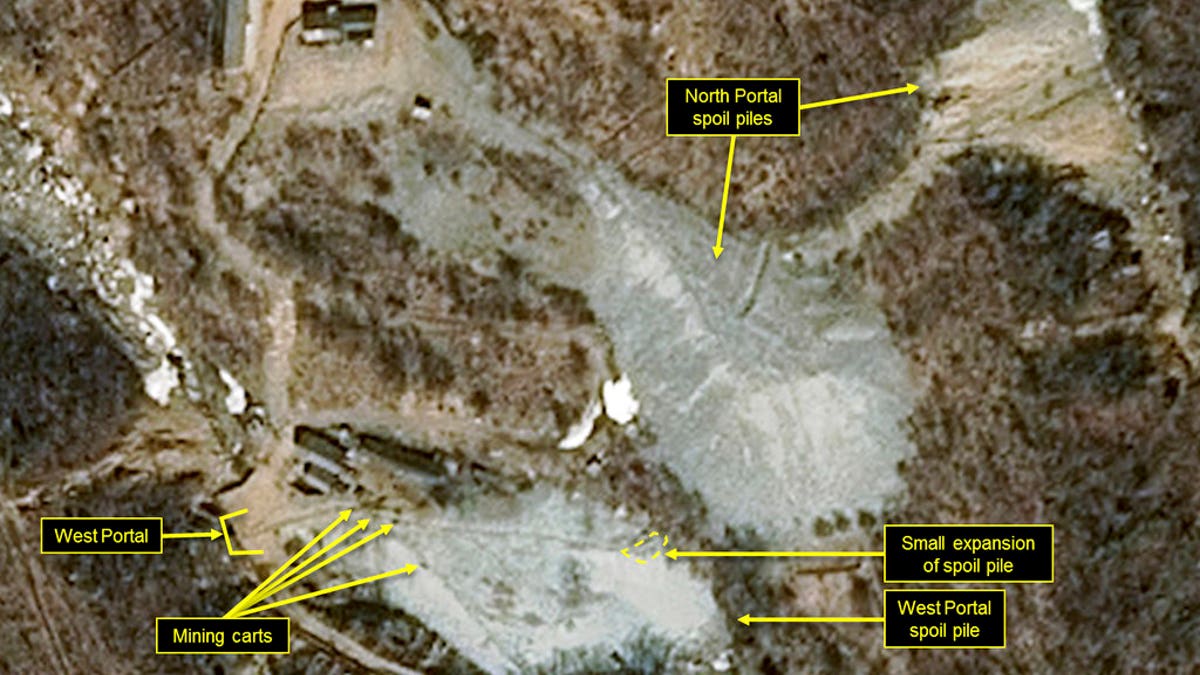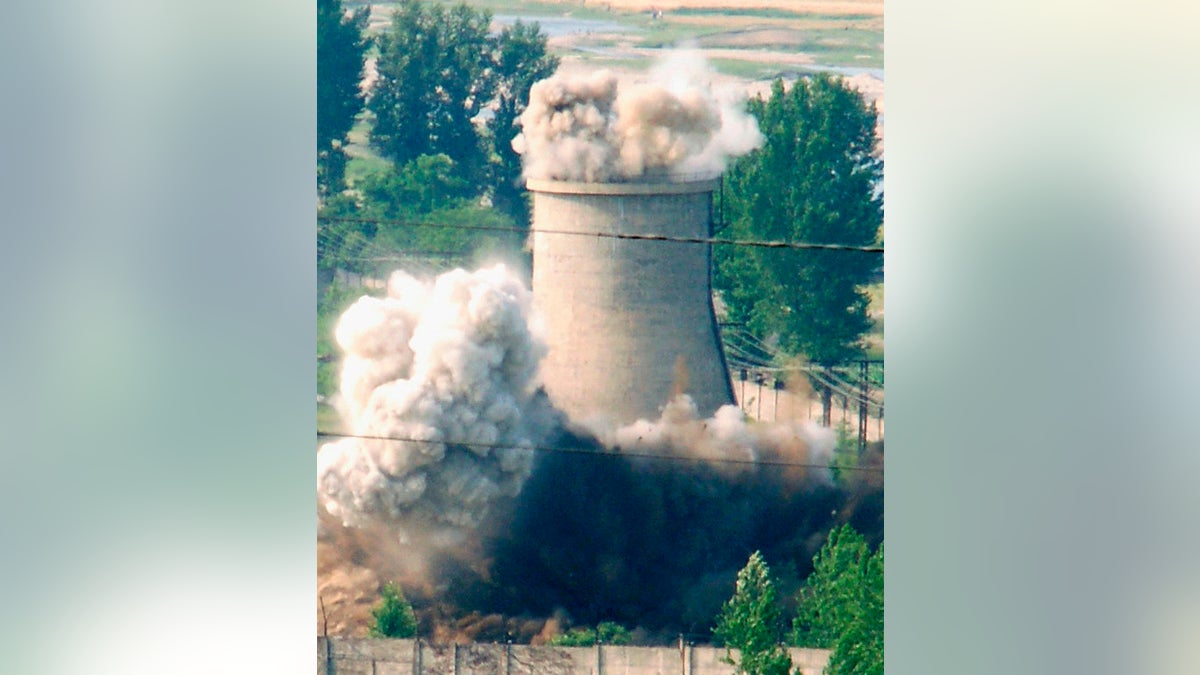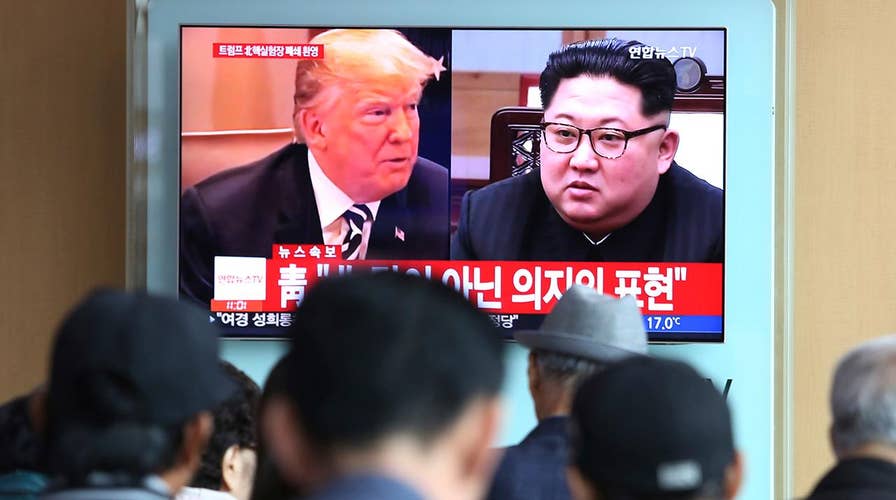North Korea to dismantle nuclear test site May 23-25
Trump thanks North Korea after announcing plans to dismantle nuclear test site. Greg Palkot has the latest developments.
North Korea has begun demolishing buildings and removing mining carts at its primary, but dilapidated, nuclear test site in preparation to close it next week, satellite images indicated, as questions loom about at least one other possible facility Kim Jong Un can turn to to test his weapons of mass destruction.
The images obtained by 38 North showed several changes to Punggye-ri nuclear test site between April 20 and May 7, including razed buildings. A shed and engineering office building at the site’s north portal, where the last five nuclear tests were conducted, were gone in recent satellite images.

Before and after photos show differences at the Punggye-ri nuclear test site. (Airbus Defense And Space/38 North)
"Commercial satellite imagery from May 7 provided the first definitive evidence that dismantlement of the test site was already well underway," the report published Monday stated.
Buildings at the new west portal also appeared to be removed. Rail lines and carts seemed to be tipped over or disassembled.
The images leaked about a week before North Korea is expected to hold a “ceremony” to publicly dismantle the facility. The regime said it plans to close the nuclear test site by collapsing tunnels and removing observation and research facilities. The entrances will also be blocked out. Journalists from the United States, South Korea, China, Russia and Britain were invited to the planned event on May 23-25.

This satellite image released and notated by Airbus Defense & Space and 38 North on March 30, 2018, shows the Punggye-ri nuclear test site in North Korea. (Airbus Defense and Space/38 North via AP)
The early start the dismantling, however, appears to be an attempt by North Korean officials who are “sanitizing” the site to scrub information they don't want in the hands of journalists, director of the East Asia Nonproliferation Program at the Middlebury Institute of International Studies, told the Wall Street Journal.
Roh Jae-cheon, spokesman for South Korea's Joint Chiefs of Staff, said the North was doing “preparatory work” for the scheduled dismantling of the site. He did not specify what the military has seen.
Analysts say the closure of the site is mostly symbolic for North Korea and doesn't represent a material step toward denuclearization. Kim pledged to denuclearize even though he said North Korea’s nuclear weapons and missile program was complete.
Although North Korea committed to closing Punggye-ri’s test site, another facility could be used to continue the country’s nuclear weapons program. Yongbyon nuclear complex, located about 64 miles north of Pyongyang, has a new reactor that could produce weapons-grade plutonium. Pyongyang insists is being used to produce electricity for its citizens.

A cooling tower is demolished at a North Korean nuclear plant in Yongbyon in 2007. (Reuters)
The regime began operating its first nuclear reactor at the complex in the 1980s, The New York Times reported. In 2007, North Korea shut down facilities in the complex as part of an agreement during six-nation nuclear talks. A cooling tower was demolished at the complex as a “gesture of good faith,” but did little to completely shut down the site.
Satellite images in 2010 showed the regime was beginning to construct a new reactor. Officials announced three years later that it would restart the reactor at Yongbyon, the same year North Korea conducted a nuclear test. In February, satellite images appeared to show signs the five-megawatt reactor was operating.
The Associated Press contributed to this report.

